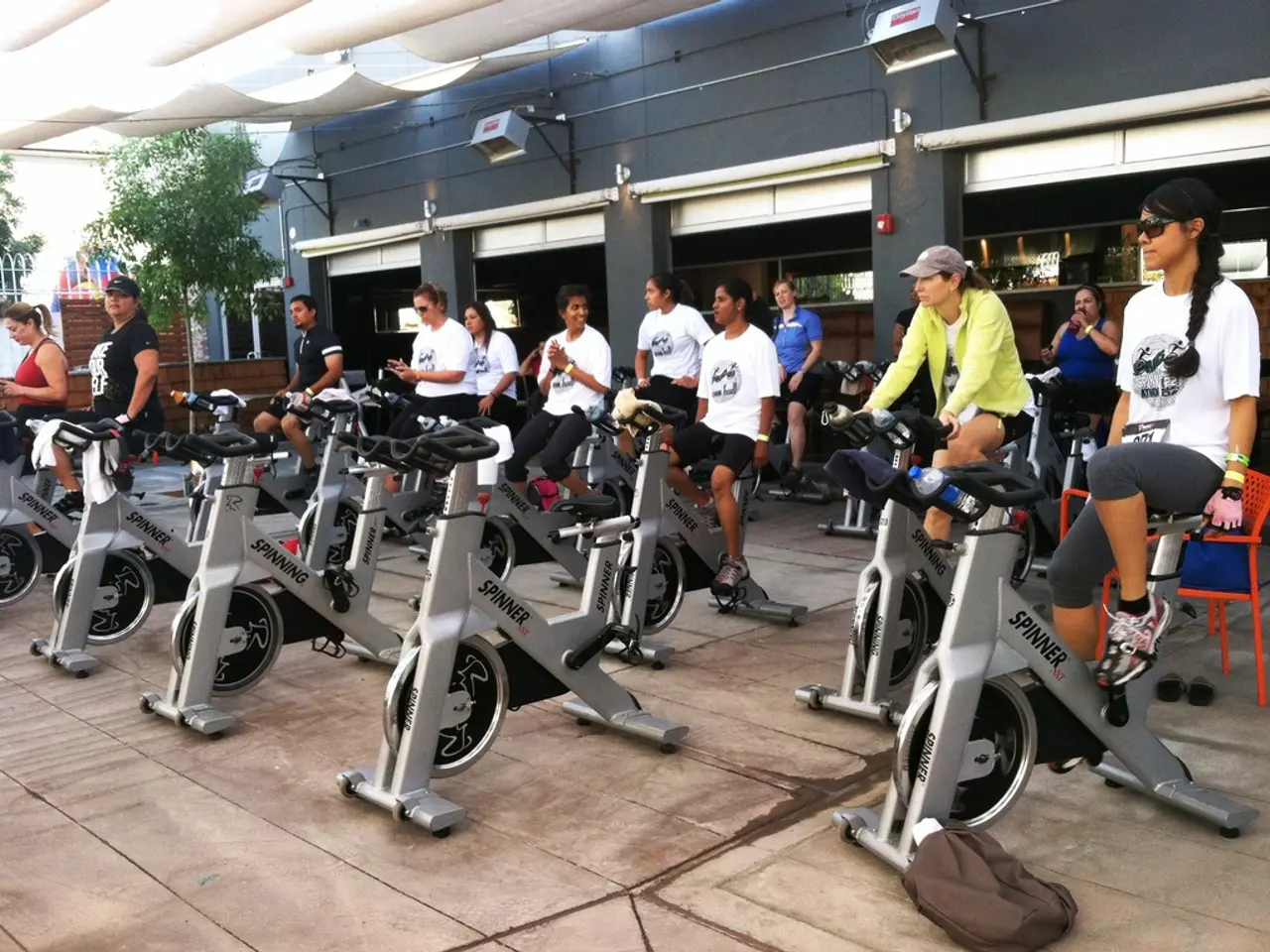Enhance Your Stamina via Breathing Techniques: Unleashing Durability with Breathwork Practice
In the world of fitness, small changes can lead to significant improvements. One such change is the practice of breathwork, a technique that has been transforming the lives of athletes and gym-goers alike.
Take Mia, for instance, a dedicated runner who often grappled with anxiety before races. By adopting breath control techniques, she managed to calm her nerves, leading to better race times and an overall enjoyable experience. Similarly, Sarah, a casual gym-goer, discovered the benefits of breathwork for enhancing strength and endurance during workouts.
Effective breathing techniques can facilitate relaxation, aiding in recovery post-exercise and reducing fatigue. One such technique is diaphragmatic breathing, breathing deeply into the belly, which can significantly improve lung capacity and efficiency, translating to increased endurance during cardio sessions and better recovery after weightlifting.
Sarah started each workout with diaphragmatic breathing practice, promoting deeper, more efficient breaths as a warm-up. During cardio sessions, she introduced breath counting to maintain focus and manage her heart rate. During strength training, she discovered the importance of breath control during lifts for better performance.
Controlled breathing can regulate heart rate and blood pressure, helping to maintain a steady pace during physical activity. Breathwork encourages mental clarity and concentration, allowing individuals to stay present and engaged during their workouts.
A study published in the Journal of Strength and Conditioning Research revealed that athletes who practiced breath control techniques experienced improved performance metrics, including increased VO2 max (the maximum rate of oxygen consumption during exercise).
Another competitive cyclist, Alex, struggled with endurance during long rides. After incorporating breathwork techniques, he found he could push through fatigue and sustain his energy levels longer, leading to improved race performance.
Specific breathwork techniques that improve strength and endurance during fitness workouts include nasal breathing, diaphragmatic (belly) breathing, breath control with intra-abdominal pressure, and breath-holding during movement.
Practical application involves keeping your mouth closed and breathing through your nose during exercise, practicing belly breathing by placing your hands on your abdomen to feel expansion, coordinating breath with effort—taking a strong inhale to brace the core, then exhaling steadily through exertion, and including breath control exercises like left-nostril breathing for calm and control, and incremental breath-holding as intensity increases.
Together, these techniques optimize oxygen use, strengthen respiratory muscles, improve mental focus, reduce stress responses, and support muscular and cardiovascular endurance during workouts.
Remember, the key to mastering breathwork is consistency. Start with just a few minutes of practice daily. Gradually increase the duration as you become more comfortable. The importance of consistency cannot be overstated.
Breathwork is not just for athletes, though. It's a powerful tool for managing stress and anxiety, promoting relaxation and mental clarity in any situation. So, take a deep breath, and let's get moving!
- Mia, a runner, noticed improved race times and a more enjoyable experience after adopting breath control techniques to manage anxiety.
- Diaphragmatic breathing has been shown to improve lung capacity and efficiency, enhancing endurance during cardio sessions and recovery after weightlifting.
- Practicing diaphragmatic breathing as a warm-up before workouts can promote deeper, more efficient breaths during exercise.
- Breathwork can help athletes, like Sarah, regulate heart rate and blood pressure, maintaining a steady pace during physical activity.
- The study in the Journal of Strength and Conditioning Research found that athletes who practiced breath control techniques experienced better performance metrics, including increased VO2 max.
- Alex, a cyclist, found improved endurance during long rides after incorporating breathwork techniques, allowing him to push through fatigue.
- Specific breathwork techniques, such as nasal breathing, diaphragmatic breathing, and breath control with intra-abdominal pressure, can improve strength and endurance during fitness workouts.
- Consistency is key to mastering breathwork, as starting with just a few minutes of practice daily and gradually increasing the duration can support muscular and cardiovascular endurance.
- Breathwork is not only beneficial for athletes but also for managing stress, anxiety, and promoting mental clarity in any situation, making it a valuable tool for overall health and wellness.




